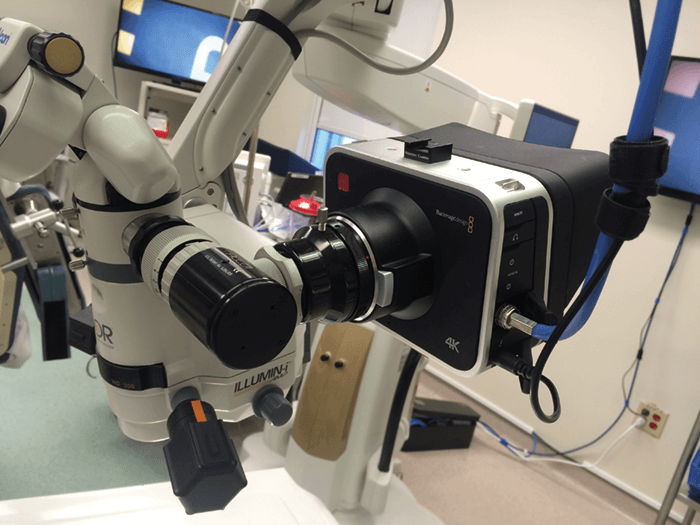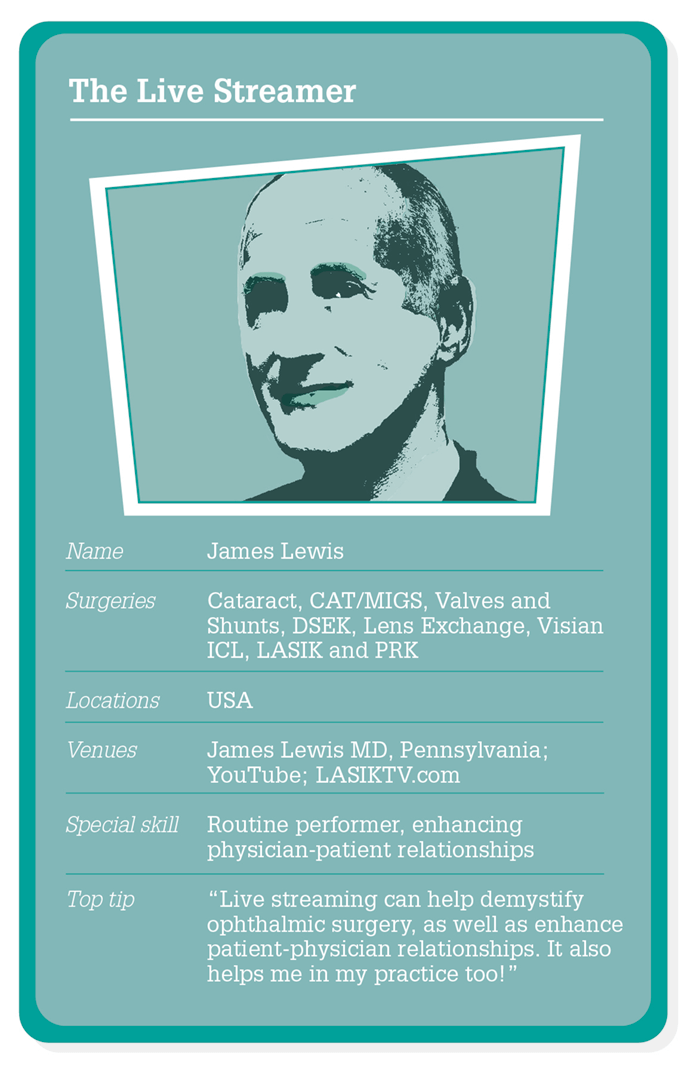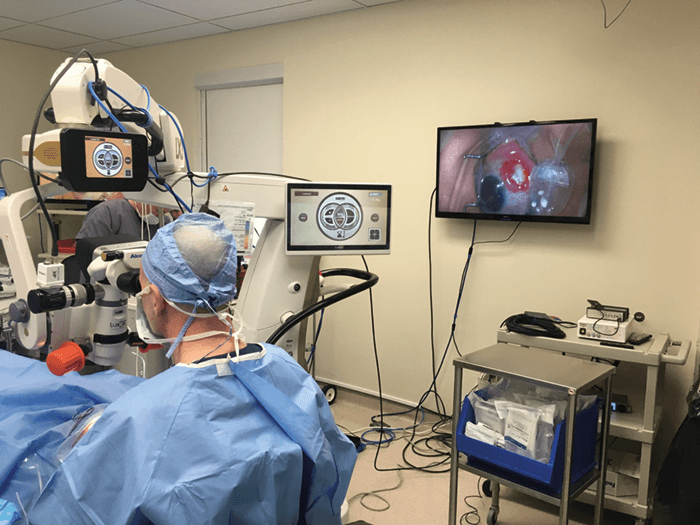
As a cataract and refractive specialist, a typical week involves seeing patients and performing surgeries, just like many other ophthalmologists. What isn’t so typical is that every week I live stream approximately 50 of my cases via YouTube and my website, LASIKTV.com. What inspired me to do this? Live streaming my surgeries demystifies ophthalmic surgery for the public, as well as demonstrating LASIK and anterior segment surgery for prospective patients. The live surgery also enhances communication with fellow surgeons, provides students and clinicians with an appreciation of techniques painfully absent in highly edited videos, and allows me to compare my techniques with other practitioners.

Going live
I first began recording my cases in the 1990’s and handed VHS tapes to my patients. I then migrated to DVDs and finally to YouTube streams. I actually found the first cases psychologically atraumatic because I was accustomed to being observed by residents, fellows, referral sources – and the occasional insistent family member. It is actually reassuring to know that your best efforts are memorialized and the management of difficult clinical scenarios is well documented. I also retain 4K copies of interesting cases for lectures or other presentations. Incorporating streaming into surgery has been incredibly useful. At the end of the case, I can collect the YouTube URL and paste it into the patient’s chart as well as forward it to their email address. The live surgeries also enhance the patient-physician relationship through generating a level of understanding and appreciation – questions are answered and patients are often reassured that I am willing to provide unrestricted access to my surgery. Some are interested in the mechanics and find viewing the procedures calming; some appreciate the realism. Referral sources also enjoy watching select cases, which helps with patients choosing my practice. Students have found that streaming extends their educational experiences, and I have used live streaming to teach hundreds of surgeons transzonular instillation of antibiotics/steroids. I have also used my streaming to help device manufacturers assess new instruments, as they can gather vital information from live remote observation. Furthermore, while the pundits contemplate the merit-based incentive payment system (MIPS) and other clinical assessment tools, I find that video preservation of clinical and surgical encounters to be far superior to all the arduous documentation. Furthermore, live streaming can convince a skeptical insurance company that a cataract surgery should be reimbursed as ‘complex’. Despite expanding hard drive capacities and improved compression techniques, nothing compares to the permanent, limitless, zero cost, secure storage provided by YouTube. Fellow ophthalmologists who are interested in live streaming should first optimize their microscope, their video adapters, cameras, recording systems and monitors. Next, they should explore software, webcams, and format converters/switchers so the production remains trivial yet polished. With the growing popularity of webcasting and streaming, the market is replete with highly professional and affordable devices.
A staff member, preferably someone motivated, should act as the Director. I defer all streaming decisions to the Director so that I can focus on entirely on the procedure. Before your first live streaming, master the camera software, resolve network considerations, finalize camera positions and establish a protocol for the video sequence. Sound, color, brightness, contrast, centration, patient privacy – and staff demeanor – must be established before you go live. Also remember that the quality and content of the live stream is of course secondary to the well-being of your patient; you should ‘de-stream’ if the clinical situation warrants or convert the stream to private. My next endeavor is to video-document my clinic securely online. For now, catch me every Friday and every other Monday on my YouTube channel, and every Wednesday on my LASIK channel! James Lewis is a cataract and refractive specialist in Elkins Park, Pennsylvania, USA. Lewis’ live streamed surgery can be watched on YouTube via the following link: www.youtube.com/user/jslewisMDPC Live LASIK surgeries can be viewed through: lasiktv.com
